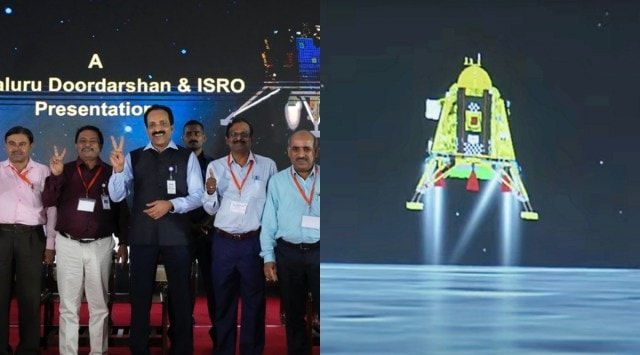‘Breathing, sleeping Chandrayaan’: ISRO scientists recall toil behind success
One of the scientists talks about breathing in and breathing out the Chandrayaan mission for the past four years.
 Chandrayaan-2 was the work of many years and Chandrayaan-3 of the last four years,” ISRO Chairman S Somnath said after the success. (File)
Chandrayaan-2 was the work of many years and Chandrayaan-3 of the last four years,” ISRO Chairman S Somnath said after the success. (File) One of the main takeaways that the Indian Space Research Organisation’s scientists provided after the Chandrayaan-3 spacecraft’s lander module safely hit the moon’s surface was that the failure of the Chandrayaan 2 mission in 2019 was really the stepping stone to Wednesday’s success.
There were multiple accounts provided by ISRO scientists of the amount of effort that was put into the Chandrayaan-3 mission to ensure that the mistakes in the Chandrayaan-2 mission are not repeated and to reduce the probability of failure to the minimum. Scientists recounted that there were moments of criticism and ridicule that had to be overcome for success.
“Chandrayaan-2 was the work of many years and Chandrayaan-3 of the last four years. The learning from Chandrayaan-2 of the unsuccessful attempt to soft-land has really helped us perfect the methodology and also have a large number of experiments and tests in the process of landing and it has paid dividends,” ISRO Chairman S Somnath said after the success.
Three of the key scientists associated with the Chandrayaan-3 mission were also a part of Chandrayaan-2—project director P Veeramuthuvel, associate project director K Kalpana and mission director M Srikanth. Top scientists like V Narayanan also contributed to the Chandrayaan 2 mission.
Veeramuthuvel attributed the success of Chandrayaan-3 to an intense review process of the mission. He thanked the critical operations review committee in particular for thoroughly reviewing the mission operations. “The landing was spot on due to the review process,” he said.
According to Kalpana, it was the intense work to build from the failure of Chandrayaan-2, where she was the associate director as well, that facilitated the success of Chandrayaan-3.
“We started rebuilding our spacecraft after the Chandrayaan-2 experience. It has been a case of breathing in and breathing out the Chandrayaan mission for the last four years for us. Starting from the reconfiguration, all the special tests and simulations we have done meticulously,” she said.
“We have been working for the last four years continuously on this mission alone. Now everything is good, everything has gone smoothly. It has been a textbook landing,” Chandrayaan-3 mission director M Srikanth said.
M Sankaran, director of the UR Rao Space Center, which was responsible for the power, communication and basic structures of the Chandrayaan-3 spacecraft, was most forthcoming in explaining the struggles of incorporating the lessons from the 2019 failures.
“Today we have achieved what we set out to achieve in 2019. It was delayed for about four years but we have done it,” he said Wednesday. He said the entire project team and not just the project director and associate director had been eating, breathing, sleeping Chandrayaan-3 for the past four years.
“Given the number of simulations that have been done, the number of reviews they have gone through and the amount of criticism they have faced and overcome—as a person watching this along with them for the last four years, my heart goes out to them. The amount of effort is tremendous,” Sankaran said after the success of the mission. “The success is a reflection of the effort that has been put in.”
According to B N Ramakrishna, director of the ISRO’s Telemetry Tracking and Control Centre, the last four years were about “discussion on all the reasons for the failure of Chandrayaan-2 and working continuously in making changes”.
“After the failure of the Chandrayaan-2 mission, a failure analysis committee was created and we thoroughly studied the problems in Chandrayaan-2 and submitted a report to resolve the problems. The Chandrayaan-3 spacecraft was realised after incorporating the changes that were recommended and this has resulted in the success,” said Dr V Narayanan, director of the ISRO’s Liquid Propulsion Systems Centre who also headed the failure analysis committee.







